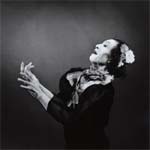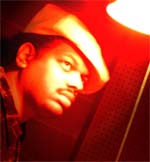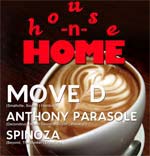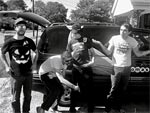| |
|
|
|
|
|
|
| |

$24.99 CD


|
|
THOMAS BINKLEY
Troubadours, Trouveres, Minstrels
(Warner UK)
 "Beatriz De Dia / A Chantar M'er De So Qu'Eu No Volria" "Beatriz De Dia / A Chantar M'er De So Qu'Eu No Volria"
 "Bernart De Ventadorn / Can Vei La Lauzeta Mover" "Bernart De Ventadorn / Can Vei La Lauzeta Mover"
Very, very rarely it is possible to be confronted with an example of music that can completely change the direction of your listening, inciting a curiosity and passion for a new form that will come to see inexhaustible, whether it be discovering John Coltrane and jazz for the first time, or Harry Smith's Anthology of Folk Music, or dub through King Tubby, or the world of psych-folk via the Incredible String Band. Back in 2005, I had my curiosity peaked about an album that the Wire magazine played for Keiji Haino in one of their Invisible Jukebox series of interviews, by a group specializing in music of the Middle Ages led by Thomas Binkley called Studio Der Fruhen Musik. As I recall, Haino first heard it playing at a record shop in Japan and was so struck by the music that he essentially hijacked it off the stereo, and he ultimately felt that this was amongst the greatest pieces of recorded music he'd ever heard. My reaction was, "Hell, I need to hear that!" So I hiked up to the great Academy Classical shop on 18th Street during my lunch break, flipped through the new arrivals of LPs, and plucked out an album called Planctus, by Studio Der Fruhen Musik for four bucks, which was very lucky as I'd come to learn it was amongst the greatest albums they ever made. I gave it my deepest attention that night when I got home, and have been hooked ever since.
Beginning around 1960, and continuing until the mid-seventies, the American expatriate Thomas Binkley and the core of his ensemble, Sterling Jones, Nigel Rogers and Andrea Von Ramm, recorded upwards of fifty albums, doing as much as anyone to establish the field of early music studies in Europe and the United States. Their music was deeply researched, full of fascinating liner notes and theories about the performance practice of music in the Middle Ages, and Binkley was keen to make connections between European traditions and the influence and impact that the culture of Middle Eastern artisans, Sephardic Jews, and North African Moors would have had upon it. He had craftsman reconstruct unusual instruments like rebecs, shawms, hurdy gurdy's, and viols, along with all manner of hand percussion instruments, all of which created a wonderfully deep and droney racket to accompany the exquisite poetry of the ancient Troubadours, Trouveres, and Minstrels of Occitania, Northern France, and Germany. Since none of the music of the Middle Ages was notated, any recreation of it is an act of informed imagination, and Binkley and his group were masters at making this music fiercely contemporary and relevant; rarely have I heard music that sounds so weirdly familiar and compelling, yet is so obviously old and removed from our quotidian reality.
The world of early music is often gripped in an argument over questions of historical authenticity, and some of Binkley's theories have come to seem suspect, which may account for the curious lack of presently available recordings by his group. I'm not sure it really matters, we still read and enjoy translations of Tolstoy by Constance Garnett, even though they're removed from the true reality of his art. What matters most is that this music is deeply felt and inhabits an incredibly mysterious world. A couple months back I was reading a recent edition of the Wire's Invisible Jukebox, this time with another Japanese musician, Acid Mother's Temple leader Kawabata Makoto, and he also mentioned the music of Studio Der Fruhen Music, and insisted that this is music that operates on "a higher plane"; I couldn't agree more. This two-disc collection is an extremely excellent introduction to their efforts at historical resurrection, with imaginative settings of texts by some of the greatest European poets of all time that devastate any type of Renaissance Fair cliché's that you could associate with the Middle Ages. [MK] |
|
| |
|
|
|
|
|
|
|




























